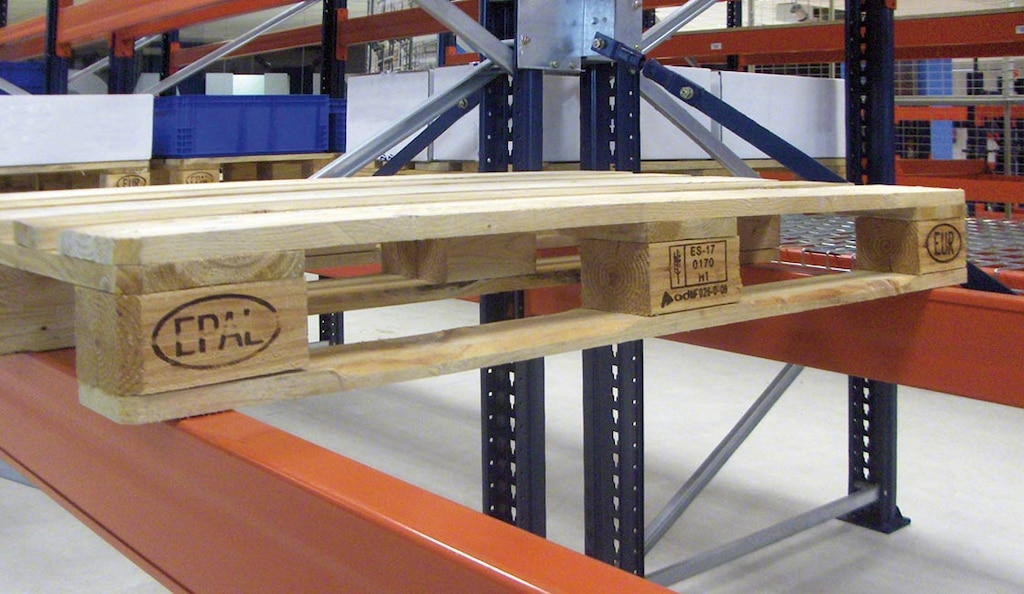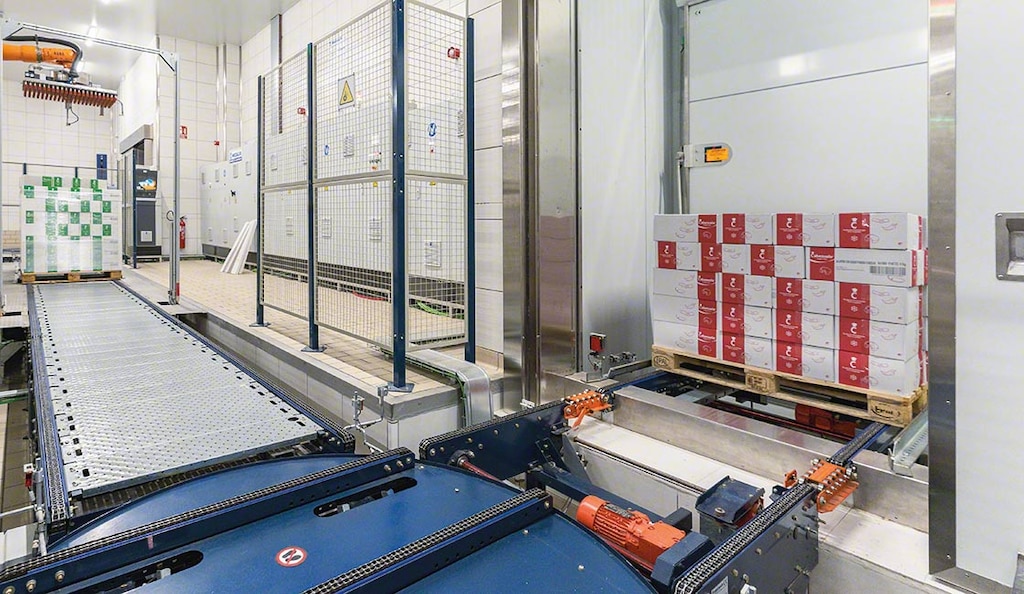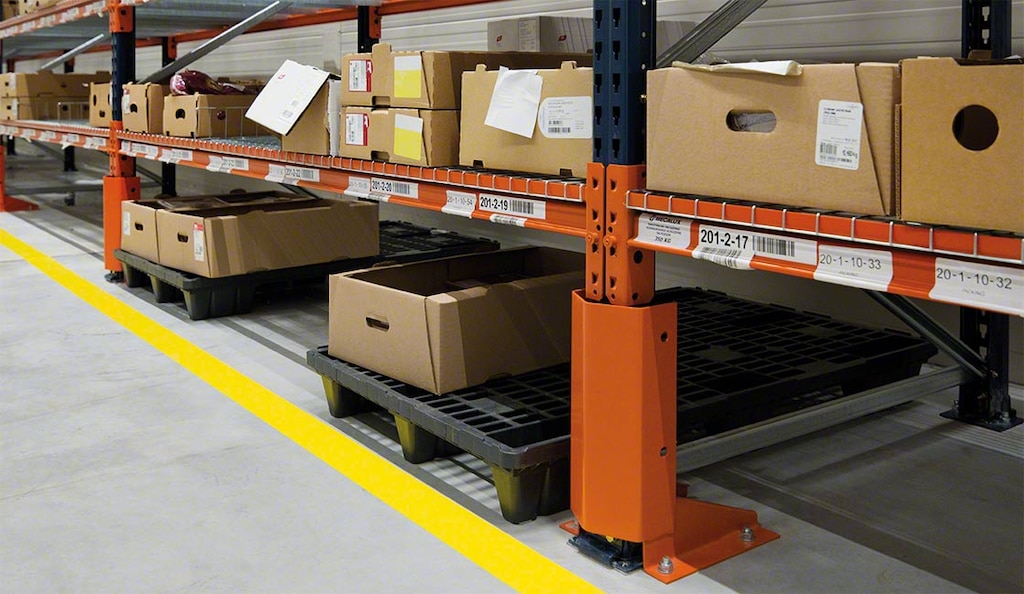
Euro pallet vs. US pallet: What’s the difference?
Euro pallets and US pallets are wooden platforms designed to store and transport palletised goods both inside and outside warehouses. The main difference between the two is size: a Euro pallet measures 1200 × 800 mm (47.2" × 31.5"), while a US pallet — also typically referred to as a North American or GMA pallet — is slightly wider at 1219 × 1016 mm (48" × 40").
Although these are the most common sizes, the International Organization for Standardization (ISO) also defines other standards: 1200 × 1000 mm (47.2" × 39.4"), 1165 × 1165 mm (45.9" × 45.9"), 1100 × 1100 mm (43.3" × 43.3") and 1067 × 1067 mm (42" × 42").
Euro pallet characteristics
The Euro pallet, also known as the EUR- or EPAL-pallet (an acronym for the European Pallet Association), is the most widely used unit load for palletised goods in Europe. It’s regulated at the European level by quality standard EN 13698-1 and internationally by ISO 6780. The Euro pallet measures 1200 mm long by 800 mm wide. These dimensions fit standard-sized plastic and cardboard boxes, making it easier to group goods.
Euro pallets can be used in any racking system as long as their deckboards rest perpendicular to the beams. They support loads up to 1,500 kg in motion and up to 4,000 kg static. Euro pallets can be handled by any forklift or other kind of handling equipment, making them suitable for automated storage and retrieval systems (AS/RSs).
Their standardised size also optimises transport: an articulated lorry can carry up to 33 pallets, although fewer fit in shipping containers due to space constraints.
All Euro pallets must be stamped with the EUR symbol on one side, certifying compliance with quality standards. Not bearing this official logo could lead to shipment rejection or even penalties for the supplier or receiver.

US pallet features
In the US, the most popular pallet is the North American or GMA pallet, named after the Grocery Manufacturers Association (rebranded as the Consumer Brands Association in 2020). Standardised under ISO 3676, it has facilitated global trade and export.
North American pallets share roughly the same length as Euro pallets (1219 vs. 1200 mm) but are 216 mm wider, giving them a more square shape. This extra width provides greater stability, making them ideal for transporting liquids.
While extensively used in the US, the North American pallet isn’t the only standard size; several variations exist by industry (e.g. food and beverage, automotive, military, chemical and pharmaceutical sectors).

Euro pallet vs. US pallet: Similarities
Euro and GMA pallets serve the same purpose: grouping, storing and transporting goods safely.
Nowadays, both are made from various materials. While wood was the original standard, plastic and metal pallets are increasingly utilised, depending on the industry and specific operational requirements. For instance, metal pallets are common in the automotive sector due to their high load capacity.
Euro pallet vs. US pallet: Differences
The table below sums up the main differences between these two widely used pallets:
| Pallet type | US (GMA) pallet | Euro pallet |
|---|---|---|
| Dimensions | 1219 × 1016 mm (48" × 40") | 1200 × 800 mm (47.2" × 31.5") |
| Popular in | US | Europe |
| Standardisation | ISO | EN/ISO |
The main difference is width: GMA pallets offer more stability, particularly for liquids.
Another key distinction is the regulation of their manufacture and design. North American pallets follow ISO standards, while Euro pallets adhere to ISO 6780 in addition to European standard EN 13698-1: “Pallet production specification - Part 1: Construction specification for 800 mm × 1200 mm flat wooden pallets”.

A pallet for every warehouse
Although both serve the same basic function, Euro and North American pallets differ in dimensions, regulation and market use.
Effective logistics planning starts with selecting the right pallet type and material. Factors like supplier origin, storage systems and handling equipment will determine whether a Euro or North American pallet will be the best fit.
